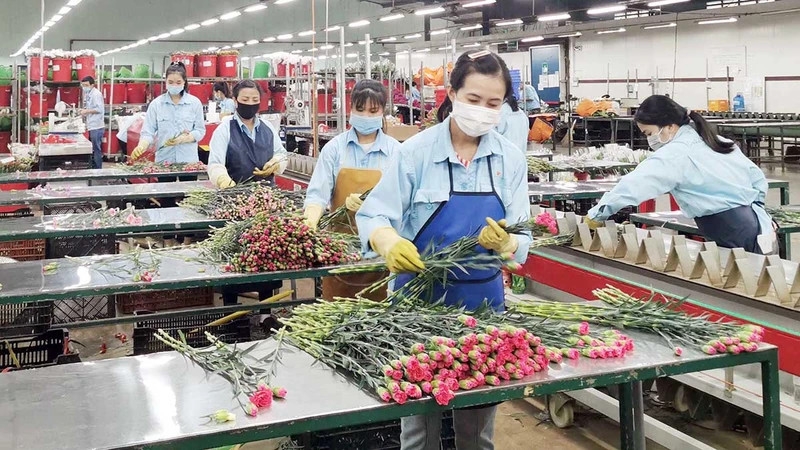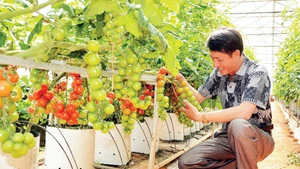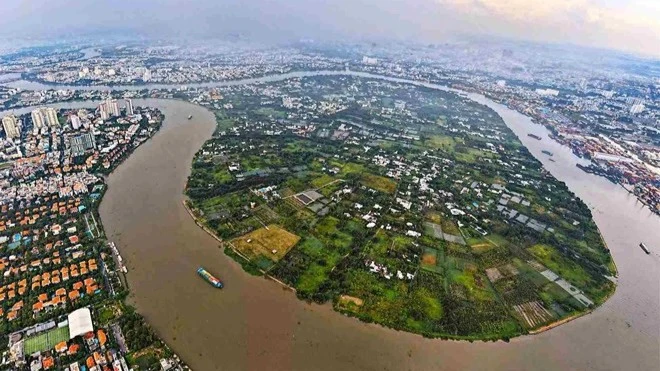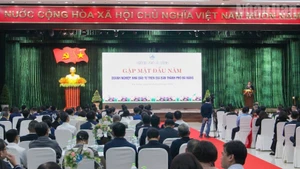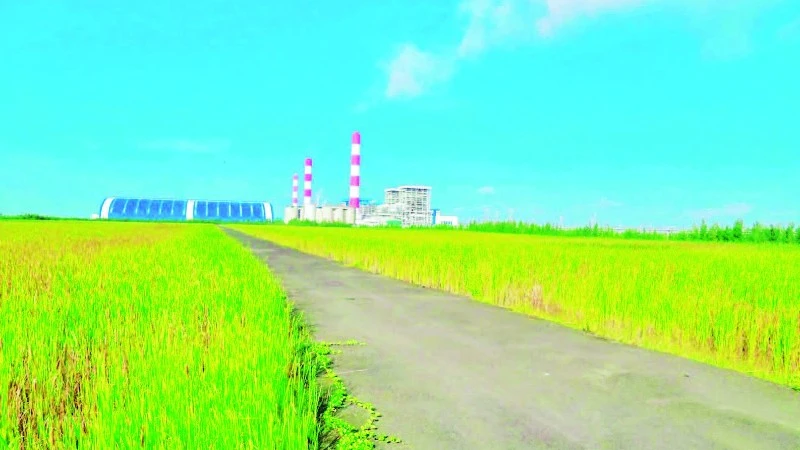With nearly six million residents, including 54 ethnic groups, the rapid and sustainable development of the Central Highlands is a major policy of the Party and the State. The region has a comprehensive and scientific master plan and now requires specific mechanisms and policies to activate its potential and advantages.
Breakthroughs from regional planning
The Central Highlands Regional Planning for the 2021-2030 period, with a vision to 2050, has been approved by the Prime Minister to develop the economy rapidly and sustainably. This plan emphasises a harmonious blend of economic, cultural, and social development while protecting resources and the environment closely linked with national defence, security, and foreign affairs as ongoing and central tasks. Le Ngoc Tuan, Chairman of the Kon Tum Provincial People's Committee, affirmed “The regional planning has defined a legal framework to guide the Central Highlands provinces towards sustainable development”.
A clear “portrait” of the Central Highlands’ future is outlined in this planning. The overall goal by 2030 is that the Central Highlands will become a region with a rapid and sustainable development based on a green and circular economy; develop high-efficiency agricultural economics based on science and technology, innovation, and digital transformation; form large-scale agricultural products with international brands linked to processing centres; and become an attractive destination for both domestic and international tourists.
The Central Highlands will see the fundamental development of essential transport infrastructure and digital infrastructure, as the upgraded cultural facilities; the richness in ethnic cultural heritage; the resolution of land issues for ethnic minorities; and the conservation and development of forest ecosystems and biodiversity. The region has also ensured defence and security; maintained and kept the stability of political security, order, and social safety; and improved the material and spiritual lives of the local people.
Vice Chairman of Gia Lai Provincial People’s Committee Duong Mah Tiep said the regional planning marks a significant milestone for the development of the Central Highlands, reflecting the central government's concern for the region, affirming its aspirations and vision, and identifying the driving forces and resources for localities to tap into and utilise.
The regional plan targets the Central Highlands to surpass the low-middle-income level by 2030. The average GRDP growth is expected to reach 7-7.5% during 2021-2030, with the average GRDP per capita projected to be around 5,000 USD per year, by 2030. About 85% of communes should achieve new rural development standards and the poverty rate should decrease by 1-1.5% per year, notably the poverty rate among ethnic minorities should decrease by more than 3% per year. The vision toward 2025 is to make the Central Highlands become a region with sustainable development, a green and circular economy, with modern and synchronised infrastructure that is an important platform to connect with major economic centres nationwide and integrate into the international economy, with peaceful, friendly, and cooperative borders. Some provinces in the region are expected to be listed in the group of fairly developed in the country.
Leaders from various ministries, sectors, and the five Central Highlands provinces agree that the standout features of the Central Highlands Regional Planning are its groundbreaking, foundational, and scientific contents, which provide momentum and suggest solutions for the region to overcome barriers for rapid and sustainable development. Speaking at the third conference of the Coordinating Council for the Central Highlands recently held in Lam Dong Province, Deputy Prime Minister Tran Luu Quang emphasised, that the Central Highlands Regional Planning is a legal framework guiding the provinces to develop sustainably through close, systematic, scientific, and cooperative linkages. In other words, it is “cooperation in development and development through cooperation.”
With the regional planning framework, the Deputy Prime Minister suggested three immediate actions for the Central Highlands provinces, including developing a connected transportation system, developing tourism in a chain and along routes, effectively taking advantage of unique cultural identities, and sharing investment attraction both domestically and internationally to create momentum and confidence for the sustainable development of the Central Highlands.
 |
| The central area of Buon Ma Thuot City, Dak Lak Province, during the festival season. (Photo: CONG LY) |
Activating development potential
The Central Highlands region has significant potential and advantages to be "activated" into a development resource. According to Deputy Minister of Planning and Investment Tran Duy Dong, the Government’s Action Programme implementing the Politburo’s Resolution No.23-NQ/TW, dated October 6, 2022, on "Directions for socio-economic development and ensuring national defence and security in the Central Highlands by 2030, with a vision to 2045", outlines 20 specific targets regarding economics, society, and the environment, along with 23 tasks and nine important regional linkage projects to be accomplished by 2030. To date, 10 out of the 23 tasks have been completed, while the remaining are large-scale projects currently being coordinated and implemented by ministries and localities.
In particular, many important contents were completed, such as the Central Highlands Regional Planning and provincial plans within the region, the establishment of the Regional Coordinating Council, and projects to enhance national defence and security combined with socio-economic development in key strategic directions of the country. Additionally, a major national project (the Khanh Hoa-Buon Ma Thuot Expressway) and five key regional linkage projects have commenced and are being accelerated. Two projects are in the final stages of investment procedures, while investment methods for the remaining projects are under research.
According to the Coordinating Council for the Central Highlands’ evaluation, the region’s 2023 socio-economic indicators are modest compared to the national average. However, important indicators have shown improvement over 2022, such as economic scale reaching 416.5 trillion VND, accounting for 4.01% of the national GDP and GRDP per capita reaching 67.58 million VND, up 15.7%, with registered FDI reaching 1.912 billion USD, up 11.9%. The economic structure of the region continues to shift positively, focusing on service development and regional strengths.
To ensure that the Central Highlands develops into a prosperous and strong region, with its people enjoying a good standard of living and happiness, and with national defence and security being strengthened, many experts suggest that the vast land must remove obstacles. For regional linkage, avoid stereotypes in planning, apply production models to limit creating mutual competition and strengthen the building and promotion of product brands, as well as the ability to apply science and technology, while attracting investment resources in infrastructure development.
Improving institutional frameworks and policies is the most effective way to address the difficulties and obstacles faced by the Central Highlands. The biggest challenge is dealing with overlaps, conflicts, and inconsistencies among the five provinces in the region across various sectors. Therefore, achieving the stated goals requires unity, cooperation, and coordination to ensure a cohesive and integrated approach.
Lieutenant General Le Quoc Hung, Deputy Minister of Public Security
The leaders of the Central Highlands provinces have suggested that the central government should prioritise investment in developing strategic transportation infrastructure for the region. They also propose establishing mechanisms to delegate management and implementation of highway segments to capable localities under public investment schemes. Additionally, they call for prompt resolution of overlaps in exploration, extraction, and processing of minerals, and the approval and implementation of key projects in the localities.
The decisive factor in improving the institutional framework stems from practical needs and the timely implementation of specific mechanisms and policies for the Central Highlands, which is considered the "key" to unlocking the region's potential and strengths. In the short term, according to Vice Chairman of Dak Lak Provincial People's Committee Vo Van Canh, it is essential to review and assess the special policies of other localities and regions that have been approved and effectively implemented by the National Assembly and the Government, so that they can be appropriately applied to the Central Highlands, effectively harnessing and exploiting the region's potential and strengths.
The Central Highlands has seen positive changes over the past year since the implementation of Resolution No. 23-NQ/TW, dated October 6, 2022, by the Politburo. The relevant ministries and sectors were urged to urgently work with localities to review shortcomings and obstacles in planning, particularly in bauxite planning, and propose suitable adjustments. Additionally, localities in the Central Highlands were advised to effectively implement the three national target programs, focus on personnel work and ethnic minority officials, and concentrate on digital transformation.
With its existing and potential advantages, and the consensus, determination, and innovative spirit of the local authorities, governments, and people, the Central Highlands is expected to easily make a breakthrough and become a prosperous, beautiful, peaceful, and livable region, especially as the basalt land has received attention from the Central Government and the entire political system, and various new models and effective practices have been implemented to exploit the potential and advantages of each locality.
